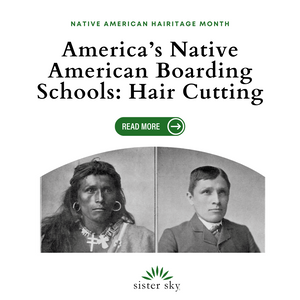America’s Native American Boarding Schools: Hair Cutting
Nov 02, 2023
The practice of forcing Native Americans to cut their hair in boarding schools is a deeply symbolic aspect of the historical mistreatment and cultural erasure imposed upon Native American peoples in the United States. This policy was part of a broader effort to assimilate Native American children into Euro-American society during the late 19th and early 20th centuries. Boarding schools were established as a means of eradicating Native American cultures, languages, and traditional ways of life, and the act of cutting Native American children's hair was a deliberate strategy employed by authorities.
Hair holds profound cultural and spiritual significance in many Native American cultures. It was seen as a symbol of one's connection to their ancestry, their community, and their relationship with the natural world. Long hair often represents a person's identity, knowledge, and connection to their tribal heritage. By forcing Indigenous children to cut their hair, boarding schools aimed to strip them of their cultural identity, forcibly assimilating them into a Westernized, Christianized lifestyle. The shearing of their hair served as a visible, dehumanizing act that was meant to humiliate and break their connection to their roots. Native American children were subjected to strict dress codes, language bans, and forced religious conversion, all designed to eradicate their Native heritage. Hair cutting was just one aspect of this larger agenda.
The trauma and cultural loss resulting from these practices persist to this day. Many Native Americans continue to grapple with the intergenerational effects of forced assimilation, including the loss of cultural identity, language, and traditional practices. Efforts to revitalize and preserve Native American cultures are ongoing, and the history of boarding schools, including the practice of forcing children to cut their hair, serves as a painful reminder of the enduring resilience of Native American communities in the face of historical injustices.


